Mushroom Species
|
Term |
Description |
|
✅ Reishi (Ganoderma lucidum) |
Known as the "mushroom of immortality," renowned for its immune-modulating and adaptogenic properties. |
|
✅ Lion's Mane (Hericium erinaceus) |
Recognized for its potential to support cognitive function and nerve health. |
|
✅ Chaga (Inonotus obliquus) |
A parasitic fungus found on birch trees, valued for its antioxidant properties. |
|
✅ Cordyceps (Cordyceps militaris) |
Traditionally used to enhance energy and athletic performance. |
|
✅ Turkey Tail (Trametes versicolor) |
Known for its immune-boosting properties, often used in complementary cancer therapies. |
|
✅ Maitake (Grifola frondosa) |
Also called "hen of the woods," it supports immune function and may aid in blood sugar regulation. |
|
✅ Shiitake (Lentinula edodes) |
Commonly used in cuisine and supplements for its immune-enhancing properties. |
|
✅ Agaricus blazei |
Known for its potential anti-tumour and immune-boosting effects. |
|
✅ Enoki (Flammulina velutipes) |
Contains compounds that may support immune health. |
|
Poria (Poria cocos) |
Used in traditional Chinese medicine for its diuretic and calming properties. |
|
✅ Snow Fungus (Tremella fuciformis) |
Valued for its hydrating properties and potential skin benefits. |
|
Blazei (Agaricus subrufescens) |
Known for its immune-enhancing properties. |
|
Oyster Mushroom (Pleurotus ostreatus) |
Contains compounds that may support cardiovascular health. |
|
King Trumpet (Pleurotus eryngii) |
Rich in antioxidants and supports immune function. |
|
Himematsutake (Agaricus brasiliensis) |
Known for its potential anti-cancer properties. |
|
✅ Mesima (Phellinus linteus) |
Used in traditional medicine for its immune-supporting properties. |
|
Zhu Ling (Polyporus umbellatus) |
Traditionally used as a diuretic and to support liver health. |
|
Artist's Conk (Ganoderma applanatum) |
Known for its antimicrobial properties. |
|
Birch Polypore (Fomitopsis betulina) |
Historically used for its antimicrobial and anti-inflammatory properties. |
|
Cauliflower Mushroom (Sparassis crispa) |
Contains compounds that may support immune health. |
Active Compounds
|
Term |
Description |
|
✅ Beta-D-Glucans |
Polysaccharides found in fungal cell walls, known for enhancing immune responses. |
|
✅ Triterpenes |
Compounds with anti-inflammatory and antioxidant properties, commonly found in Reishi mushrooms. |
|
✅ Ergosterol |
A sterol present in fungal cell membranes, serving as a precursor to vitamin D2. |
|
✅ Polysaccharide-K (PSK) |
A protein-bound polysaccharide from Turkey Tail mushrooms, used as an immune system booster. |
|
✅ Polysaccharide-P (PSP) |
Another protein-bound polysaccharide from Turkey Tail, known for its immune-modulating effects. |
|
✅ Cordycepin |
A nucleoside derivative from Cordyceps with potential anti-cancer properties. |
|
✅ Hericenones |
Compounds in Lion's Mane that may stimulate nerve growth factor synthesis. |
|
✅ Erinacines |
Another group of compounds in Lion's Mane, supporting nerve regeneration. |
|
✅ Lentinan |
A beta-glucan from Shiitake mushrooms with immune-enhancing properties. |
|
✅ Ergothioneine |
An antioxidant amino acid found in various mushrooms. |
|
Krestin |
Another name for PSK, used in cancer treatment as an immune system booster. |
|
Grifolan |
A beta-glucan from Maitake mushrooms, known for immune system support. |
|
Pleuran |
A beta-glucan from Oyster mushrooms with potential immune-modulating effects. |
|
Schizophyllan |
A polysaccharide from the Split Gill fungus, studied for its anti-tumor properties. |
|
Chitin |
A structural polysaccharide in fungal cell walls, contributing to rigidity. |
|
Chitosan |
A derivative of chitin with potential health benefits, including cholesterol reduction. |
|
Mannitol |
A sugar alcohol found in mushrooms, used as a sweetener and diuretic. |
|
Lovastatin |
A compound found in Oyster mushrooms, is known for cholesterol-lowering effects. |
|
Agaritine |
A naturally occurring compound in Agaricus species, under study for its potential effects. |
|
Phenolic Compounds |
Antioxidant molecules found in various mushrooms, contributing to health benefits. |
|
Flavonoids |
Antioxidant compounds present in some mushrooms, supporting overall health. |
|
Lectins |
Proteins that bind carbohydrates, found in mushrooms and studied for various biological activities. |
Extraction Methods
|
Term |
Description |
|
✅ Hot Water Extraction |
A traditional method where mushrooms are boiled to extract water-soluble compounds like beta-glucans. |
|
Alcohol Extraction |
Utilizes ethanol to extract alcohol-soluble compounds, such as triterpenoids, from mushrooms. |
|
✅ Dual Extraction |
Combines hot water and alcohol extraction to obtain a broader spectrum of bioactive compounds from mushrooms. |
|
✅ Double Extracted |
Mushrooms go through a second round of extraction for better quality, potency and purity. |
|
Ultrasonic-Assisted Extraction |
Employs ultrasonic waves to enhance the extraction efficiency of bioactive compounds from mushrooms. |
|
Membrane Separation Technology |
A filtration method used during extraction to separate and concentrate high-molecular-weight compounds like beta-glucans. |
|
Supercritical CO₂ Extraction |
Uses supercritical carbon dioxide to extract non-polar compounds from mushrooms, preserving sensitive bioactives. |
|
Microwave-Assisted Extraction |
Utilizes microwave energy to heat solvents and enhance the extraction of bioactive compounds from mushrooms. |
|
Enzyme-Assisted Extraction |
Employs specific enzymes to break down cell walls, facilitating the release of bioactive compounds. |
|
Fermentation |
A process where microorganisms break down compounds in mushrooms, potentially enhancing bioavailability and introducing new bioactive |
Lab Testing, Safety, and Purity
|
Term |
Description |
|
✅ Beta-Glucan Assay |
A test used to measure the beta-glucan content in medicinal mushrooms to ensure potency and efficacy. |
|
✅ Heavy Metal Testing |
Laboratory analysis to detect and quantify toxic heavy metals such as lead, arsenic, cadmium, and mercury in mushroom products. |
|
✅ Microbial Testing |
Screening for harmful bacteria, yeast, and mold to ensure the safety of mushroom supplements. |
|
✅ Purity Analysis |
Testing conducted to confirm the absence of contaminants, fillers, or adulterants in mushroom extracts. |
|
✅ Megazyme Assay |
A precise laboratory test for beta-glucan measurement, using enzyme-based analysis to determine fungal polysaccharide content. |
|
✅ Dual-Extraction Testing |
Quality control analysis for verifying both water and alcohol-extracted bioactive compounds in mushroom extracts. |
|
Mycotoxin Screening |
A test to detect fungal-derived toxins that can be harmful to human health. |
|
Residual Solvent Testing |
Analysis to ensure no harmful solvents remain in the final mushroom extract. |
|
✅ Third-Party Testing |
Independent lab verification of potency, purity, and safety to ensure unbiased product quality assessment. |
|
DNA Authentication |
Genetic testing to confirm the identity of mushroom species used in supplements. |
General Mycology Terms
|
Term |
Description |
|
Apothecium |
A wide, open, saucer-shaped or cup-shaped fruiting body of certain ascomycetous fungi. |
|
Ascocarp |
The fruiting body of ascomycetous fungi, containing the asci and ascospores. |
|
Ascospore |
A spore contained in an ascus or that was produced inside an ascus. |
|
Ascus |
A sac-like structure in which ascospores are formed, characteristic of ascomycetes. |
|
Basidiocarp |
The fruiting body of basidiomycetous fungi, which bears the basidia. |
|
Basidiospore |
A reproductive spore produced by Basidiomycete fungi, typically borne on a basidium. |
|
Basidium |
A microscopic, club-shaped spore-bearing structure produced by certain fungi. |
|
Chlamydospore |
A thick-walled, large resting spore of certain fungi and algae. |
|
Conidiophore |
A specialized fungal hypha that produces conidia. |
|
Conidium |
An asexual, non-motile spore of a fungus. |
|
Dikaryotic |
Having two genetically distinct nuclei within each cell. |
|
Dolipore Septum |
A septal structure found in the hyphae of certain fungi, characterized by a barrel-shaped swelling around the central pore. |
|
Gleba |
The spore-bearing inner mass of certain fungi such as puffballs. |
|
Haustorium |
A specialized structure that grows into or around another structure to absorb water or nutrients, characteristic of parasitic fungi. |
|
Hymenium |
The spore-bearing surface of a fungal fruiting body. |
|
Lamella |
The gills of a mushroom, located on the underside of the cap, where spores are produced. |
|
Peridium |
The outer layer of the spore-bearing organ in some fungi. |
|
Pileus |
The cap or umbrella-like structure of a mushroom. |
|
Rhizomorph |
A root-like aggregation of hyphae in certain fungi. |
|
Sclerotium |
A hardened mass of mycelium that functions as a resting stage in the life cycle of some fungi. |
|
Septum |
A wall dividing individual cells in a fungal hypha. |
|
Sporangium |
A structure in which spores are produced. |
|
Sporophore |
The fruiting body of a fungus. |
|
Stipe |
The stem or stalk-like feature supporting the cap of a mushroom. |
|
Trama |
The inner, fleshy tissue of a mushroom's fruiting body. |
|
Urediniospore |
A type of spore produced by rust fungi during their life cycle. |
|
Volva |
A cup-like structure at the base of certain mushrooms, remnants of the universal veil. |
|
Zygospore |
A thick-walled resting spore formed by the union of two similar gametes in certain fungi. |

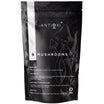
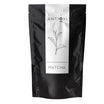
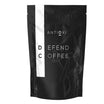
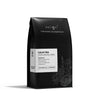
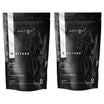
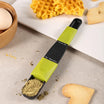

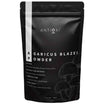
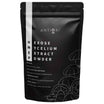
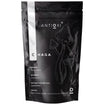
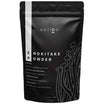
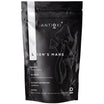
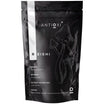
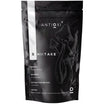
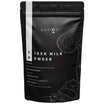
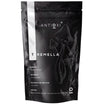
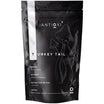



Leave a comment
All comments are moderated before being published.
This site is protected by hCaptcha and the hCaptcha Privacy Policy and Terms of Service apply.